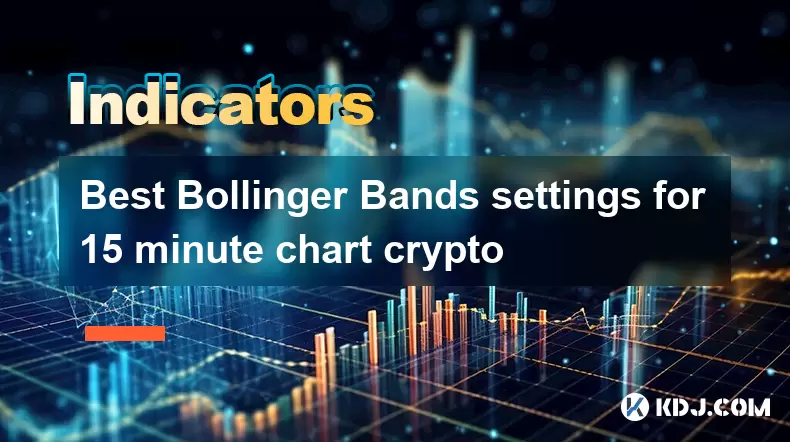-
 Bitcoin
Bitcoin $118,209.3536
1.16% -
 Ethereum
Ethereum $3,151.7546
5.98% -
 XRP
XRP $2.9277
2.35% -
 Tether USDt
Tether USDt $1.0000
0.00% -
 BNB
BNB $689.7099
1.26% -
 Solana
Solana $163.4270
1.91% -
 USDC
USDC $1.0000
0.02% -
 Dogecoin
Dogecoin $0.1983
3.74% -
 TRON
TRON $0.3008
0.51% -
 Cardano
Cardano $0.7435
2.86% -
 Hyperliquid
Hyperliquid $47.6547
-0.48% -
 Stellar
Stellar $0.4625
2.79% -
 Sui
Sui $3.9921
2.71% -
 Chainlink
Chainlink $16.0608
4.23% -
 Hedera
Hedera $0.2348
1.56% -
 Bitcoin Cash
Bitcoin Cash $496.6985
1.25% -
 Avalanche
Avalanche $21.9038
5.41% -
 UNUS SED LEO
UNUS SED LEO $8.8356
-1.88% -
 Shiba Inu
Shiba Inu $0.0...01364
5.31% -
 Toncoin
Toncoin $3.1102
4.35% -
 Litecoin
Litecoin $95.9756
3.59% -
 Polkadot
Polkadot $4.0925
5.78% -
 Monero
Monero $333.7622
-1.44% -
 Uniswap
Uniswap $9.1968
2.25% -
 Bitget Token
Bitget Token $4.6378
6.23% -
 Pepe
Pepe $0.0...01282
6.77% -
 Dai
Dai $1.0002
0.03% -
 Ethena USDe
Ethena USDe $1.0005
0.00% -
 Aave
Aave $329.9143
4.49% -
 Bittensor
Bittensor $441.4995
6.89%
Best Bollinger Bands settings for 15 minute chart crypto
Bollinger Bands help crypto traders spot overbought/oversold levels, breakouts, and reversals on 15-minute charts, especially when customized and combined with RSI or volume for better accuracy.
Jul 15, 2025 at 09:11 am

Understanding the Role of Bollinger Bands in Crypto Trading
Bollinger Bands are a widely used technical analysis tool developed by John Bollinger, and they are particularly effective in volatile markets such as cryptocurrency. The indicator consists of three lines: a simple moving average (SMA) in the middle, with two standard deviation bands above and below it. These bands expand and contract based on market volatility.
In crypto trading, especially on shorter timeframes like the 15-minute chart, Bollinger Bands help traders identify overbought and oversold conditions, potential breakouts, and trend reversals. Because cryptocurrencies often experience rapid price swings, using the correct settings for Bollinger Bands becomes crucial to filter out false signals and improve trade accuracy.
Default Settings vs. Customized Configurations
The default setting for Bollinger Bands is typically 20-period SMA with 2 standard deviations. This configuration works well in many scenarios but may not be optimal for fast-moving crypto assets on a 15-minute chart.
For more responsive signals on this timeframe, some traders adjust the period to 14 or even 10, while keeping the standard deviation at 2. Others experiment with changing the standard deviation to 1.5 or 2.5 depending on their risk tolerance and the volatility of the specific cryptocurrency they're analyzing.
It's important to backtest different configurations before applying them in live trading. Customizing the settings based on the asset’s behavior and current market conditions can significantly enhance performance.
Optimal Bollinger Band Settings for 15-Minute Charts
When analyzing 15-minute charts in crypto, a commonly preferred setting among active traders is:
- Period: 10
- Standard Deviation: 2
- Price Source: Close
This combination provides quicker responses to price movements compared to the default 20-period setup. It allows traders to capture early signs of momentum shifts and breakout attempts without being overly sensitive to noise.
Another variation that some traders use includes:
- Period: 14
- Standard Deviation: 2
- Price Source: Close
This strikes a balance between responsiveness and smoothing, making it suitable for slightly less aggressive strategies. Experimenting with both settings and observing how they align with support/resistance levels or candlestick patterns can help determine which one suits your trading style better.
Combining Bollinger Bands with Other Indicators
Using Bollinger Bands in isolation may result in misleading signals, especially in highly volatile crypto markets. To increase reliability, traders often combine them with other indicators such as:
- Relative Strength Index (RSI): Helps confirm overbought or oversold readings when prices touch the upper or lower band.
- Volume Profile: Provides insights into where significant buying or selling pressure exists.
- MACD (Moving Average Convergence Divergence): Useful for confirming trend direction and momentum after a Bollinger Band squeeze or breakout.
Proper integration of these tools enhances decision-making and reduces the likelihood of entering trades based on false breakouts or temporary volatility spikes.
Backtesting Bollinger Band Strategies on 15-Minute Charts
Before deploying any Bollinger Band strategy on live charts, backtesting is essential to validate its effectiveness. Here's a step-by-step guide to conducting a basic test:
- Select a crypto pair such as BTC/USDT or ETH/USDT.
- Apply the desired Bollinger Band settings (e.g., 10, 2).
- Identify historical instances where price touched or broke through the bands.
- Observe what happened afterward — did the price reverse, continue, or consolidate?
- Record win/loss ratios and refine entry/exit rules accordingly.
Traders should also consider adjusting stop-loss and take-profit levels based on historical volatility observed during testing periods.
Additionally, using platforms like TradingView or MetaTrader enables automated backtesting and strategy optimization, which can save time and provide deeper insights into pattern recognition.
Risk Management When Using Bollinger Bands on Short Timeframes
Because 15-minute charts are inherently more susceptible to noise and sudden volatility bursts, risk management becomes even more critical when using Bollinger Bands.
Here are some key practices:
- Always set a stop-loss order based on recent volatility or ATR (Average True Range).
- Limit position size to ensure no single trade jeopardizes a large portion of capital.
- Avoid trading solely based on price touching the bands unless confirmed by volume or momentum indicators.
- Be prepared to exit partial positions if initial targets are met quickly.
Ignoring proper risk controls can lead to substantial losses, even with a technically sound Bollinger Band strategy.
Frequently Asked Questions
What happens when the price touches the upper or lower Bollinger Band on a 15-minute chart?
Touching the upper band suggests overbought conditions, while touching the lower band indicates oversold conditions. However, this doesn’t guarantee a reversal — sometimes the price continues trending. Traders must look for confirmation from other indicators or candlestick patterns.
Can I use Bollinger Bands for scalping crypto on a 15-minute chart?
Yes, but with caution. Scalpers need faster-reacting settings and strict exit rules. Combining Bollinger Bands with RSI or volume indicators can help filter false signals and improve timing precision.
Is there a best crypto pair to apply Bollinger Bands on a 15-minute chart?
Highly liquid pairs like BTC/USDT, ETH/USDT, and BNB/USDT are ideal due to their consistent volume and volatility. These characteristics make Bollinger Band signals more reliable than in lesser-known altcoins with erratic price action.
How do I know if a Bollinger Band squeeze is about to break out on a 15-minute chart?
A squeeze occurs when the bands narrow significantly, indicating low volatility. Watch for increasing volume and price movement beyond the bands to confirm the breakout direction. Some traders use alerts or automated scripts to catch these moments in real-time.
Disclaimer:info@kdj.com
The information provided is not trading advice. kdj.com does not assume any responsibility for any investments made based on the information provided in this article. Cryptocurrencies are highly volatile and it is highly recommended that you invest with caution after thorough research!
If you believe that the content used on this website infringes your copyright, please contact us immediately (info@kdj.com) and we will delete it promptly.
- Eclipse Airdrop and Token Supply: Navigating the Crypto Landscape
- 2025-07-16 18:50:13
- Solana Price, Zebec Network, and Remittix: Decoding the Crypto Signals
- 2025-07-16 18:30:13
- Crypto Picks & Altcoin Breakout: August's Hottest Trends
- 2025-07-16 18:30:13
- XLM Stellar Analyst Prediction: Is a $10 Target on the Horizon?
- 2025-07-16 19:10:12
- Dubai, Ripple, and Tokenization: A New Era for Real Estate
- 2025-07-16 18:50:13
- Unilabs Finance (UNIL): Primed for a Massive 2025 Launch?
- 2025-07-16 19:15:12
Related knowledge

Advanced RSI strategies for crypto
Jul 13,2025 at 11:01am
Understanding the Basics of RSI in Cryptocurrency TradingThe Relative Strength Index (RSI) is a momentum oscillator used to measure the speed and chan...

Crypto RSI for day trading
Jul 12,2025 at 11:14am
Understanding RSI in the Context of Cryptocurrency TradingThe Relative Strength Index (RSI) is a momentum oscillator used to measure the speed and cha...

Crypto RSI for scalping
Jul 12,2025 at 11:00pm
Understanding RSI in the Context of Crypto TradingThe Relative Strength Index (RSI) is a momentum oscillator widely used by traders to measure the spe...

What does an RSI of 30 mean in crypto
Jul 15,2025 at 07:07pm
Understanding RSI in Cryptocurrency TradingRelative Strength Index (RSI) is a momentum oscillator widely used in cryptocurrency trading to measure the...

What does an RSI of 70 mean in crypto
Jul 13,2025 at 06:07pm
Understanding the RSI Indicator in Cryptocurrency TradingThe Relative Strength Index (RSI) is a widely used technical analysis tool that helps traders...

Does RSI work in a bear market for crypto
Jul 16,2025 at 01:36pm
Understanding RSI in Cryptocurrency TradingThe Relative Strength Index (RSI) is a momentum oscillator used by traders to measure the speed and change ...

Advanced RSI strategies for crypto
Jul 13,2025 at 11:01am
Understanding the Basics of RSI in Cryptocurrency TradingThe Relative Strength Index (RSI) is a momentum oscillator used to measure the speed and chan...

Crypto RSI for day trading
Jul 12,2025 at 11:14am
Understanding RSI in the Context of Cryptocurrency TradingThe Relative Strength Index (RSI) is a momentum oscillator used to measure the speed and cha...

Crypto RSI for scalping
Jul 12,2025 at 11:00pm
Understanding RSI in the Context of Crypto TradingThe Relative Strength Index (RSI) is a momentum oscillator widely used by traders to measure the spe...

What does an RSI of 30 mean in crypto
Jul 15,2025 at 07:07pm
Understanding RSI in Cryptocurrency TradingRelative Strength Index (RSI) is a momentum oscillator widely used in cryptocurrency trading to measure the...

What does an RSI of 70 mean in crypto
Jul 13,2025 at 06:07pm
Understanding the RSI Indicator in Cryptocurrency TradingThe Relative Strength Index (RSI) is a widely used technical analysis tool that helps traders...

Does RSI work in a bear market for crypto
Jul 16,2025 at 01:36pm
Understanding RSI in Cryptocurrency TradingThe Relative Strength Index (RSI) is a momentum oscillator used by traders to measure the speed and change ...
See all articles

























































































